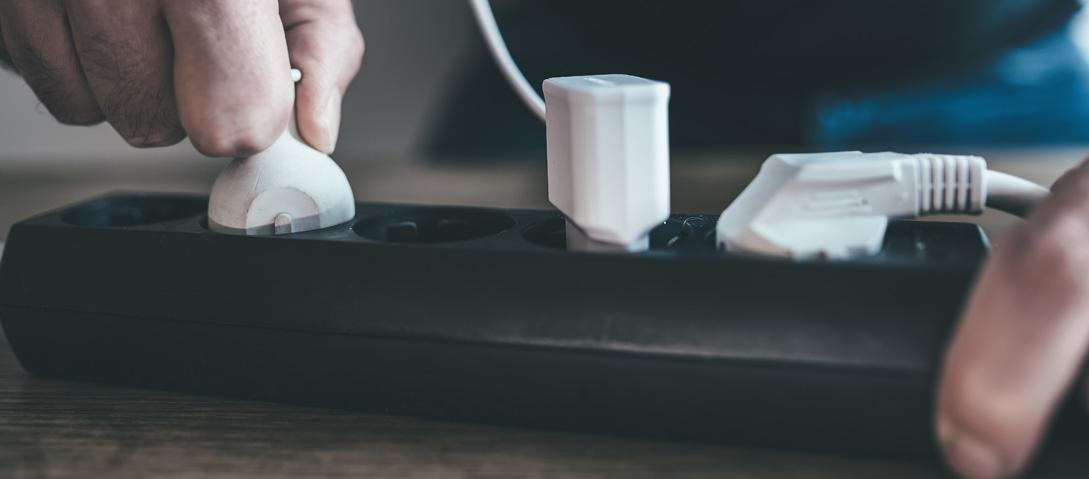Vol. 2ii- Power Distribution Blocks and Conditioners
It’s now time to look at power distribution blocks and power conditioners. Distribution blocks are designed to extend one mains outlet into multiple, and higher-end versions will have features like filtering or isolated sections. Power conditioners are purpose-built mains filters, designed to eradicate ‘noise’ from the electrical supply, and will also usually have multiple outputs.
Power Distribution Blocks
Let’s start with the more entry-level option: distribution blocks. The most basic options will simply allow multiple plugs to connect to one mains outlet, but will have their internal circuit wired in series. If you cast your mind back to primary school science lessons, you will probably remember a day when your teacher set up a basic circuit with a battery and a few small lightbulbs. When arranged in series, the lightbulbs would get dimmer as more bulbs were added to the circuit because the current only has one path to travel down. A distribution block internally wired in series will have a similar effect, which means that multiple high-powered units plugged into one distribution block may struggle to receive sufficient amounts of current.
For that reason, better distribution blocks designed for HiFi and AV uses will feature star-wired circuits (similar what we would have called parallel circuits in primary school). In this case, the current always has multiple routes to take and such a distribution block can simply take more current from the mains to ensure that each component receives enough power. To improve upon this, some distribution blocks will implement multiple star-wired circuits within the block. This has the added effect of creating multiple zones which provide a degree of isolation, allowing you to separate your noisier hardware from more sensitive equipment.
When selecting a power distribution block, it is important to ensure that it is of a similar standard to your equipment. Higher-quality power blocks will utilise lower-gauge (thicker) conductors, which is particularly important for high-current
Power Conditioners
Power conditioners are devices which are specifically designed to filter ‘noise’ out of your mains power supply. There’s a variety of different ways that such units actually filter that power, but we’re not going to delve to deeply into the electrical engineering elements of those differences. Our focus here is more on how to choose a power conditioner to meet your needs.
Firstly, it’s important to note that there can be such a thing as too much filtering. Some manufacturers of power amplifiers or subwoofers will advise against placing any kind of filter between their unit and the mains. This is because a power amplifier or subwoofer is not only a greedy component, but the amount of power it demands can vary greatly over the course of a song. This means it needs a low-impedance path from the power source, and the ability to rapidly increase its demands. For that reason, some power conditioners could have a detrimental effect on the performance of power amplifiers/subwoofers by essentially choking that supply, resulting in a loss of dynamism and leaving your music sound a little flat or subdued. That does not mean, though, that you can never plug a power amp or subwoofer into a power conditioner.
There are some manufacturers who have taken this into consideration by providing high-current outlets on their conditioners, and there are a couple of ways they can deal with the demands of hungry power amplifiers. The simpler option found on more entry-level options is to simply provide high-current outlets which do not filter the power, allowing the high-current component to draw its supply directly from the mains. In higher-end options, where the high-current outputs are being filtered to some degree, there will often be a component which provides a power reserve for your amplifier or other high-current components to ensure that they are never left wanting.
This is not a concern for constant-current devices, like streamers, CD players, turntables or DACs. Once such components are switched on and operational, they use a consistent- and lower- voltage, and as such are not in danger of being choked by excessive filtering. Constant-current devices will invariably benefit from a supply of low-noise current which will allow them to perform to their full potential.
What is important for a conditioner, regardless of the equipment you are looking to plug into it, is that it filters power in a ‘linear’ way. When we talk about ‘linear’ power filtration, we mean the result of the filtering moreso than the process itself. ‘Linear’ filtering means that all the frequencies being output by the conditioner are consistent, which results in dynamic and natural sound. A ‘non-linear’ filter will deliver different frequencies with varying consistency, meaning that some frequencies will end up sounding muffled or harsher than the rest of the music.
It is also worth considering the way your power conditioner deals with earth noise. Good power conditioners will drain this noise away from the unit and back to the mains or a grounding box (not usually included) to stop it interfering with your system. In the case of a conditioner that does perform this, you would likely benefit from using power cables from the same manufacturer, because their wiring will complement what the conditioner itself is doing to deal with ground noise.
Ultimately, there isn’t necessarily a singular ‘best’ power conditioner, there is only the right one for your system and its needs. Do you have lots of power-hungry, variable-current equipment, or more sensitive constant-current equipment? Do you have a particularly noisy mains supply, and want to filter the power for even your hungriest components? Questions like these will be what informs each individual’s decision, and one blog post cannot categorically answer them. As always, for advice tailored to your system, we would recommend getting in touch with our expert technical advisers who are always ready to steer you in the right direction.
The next instalment in this series is the big one: speaker cables; click here to continue reading!


